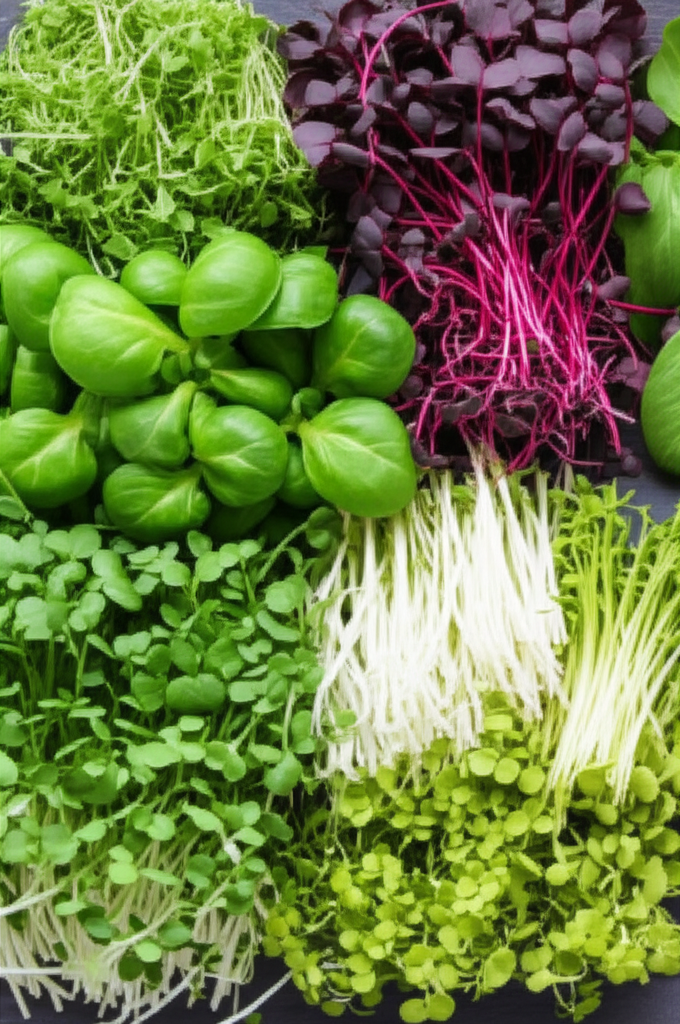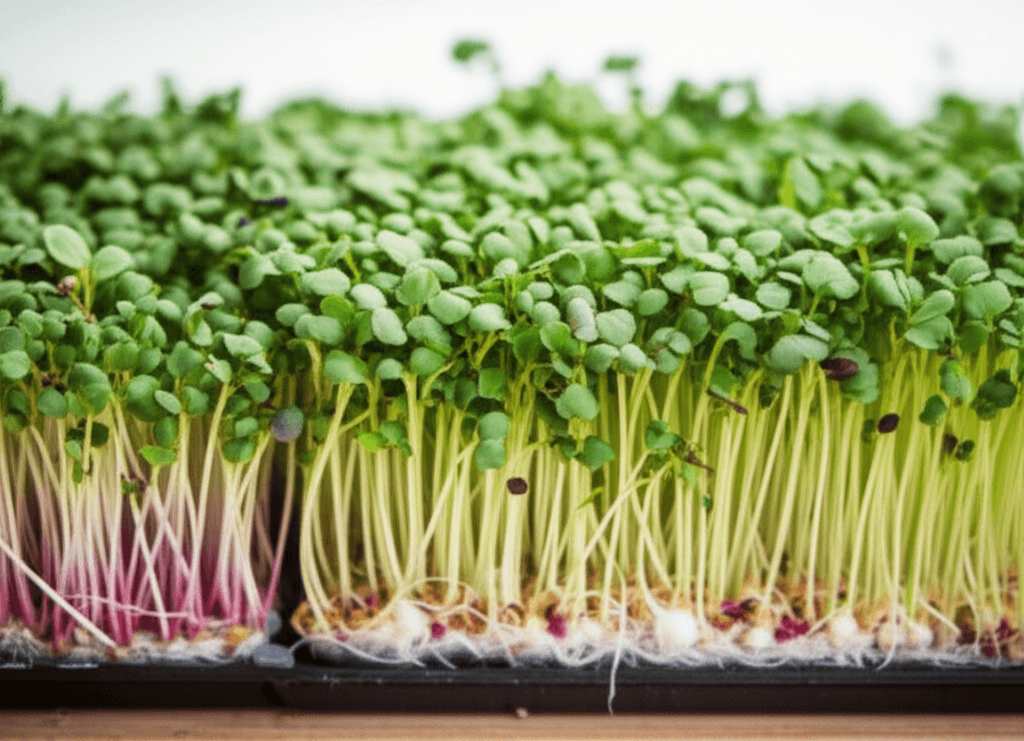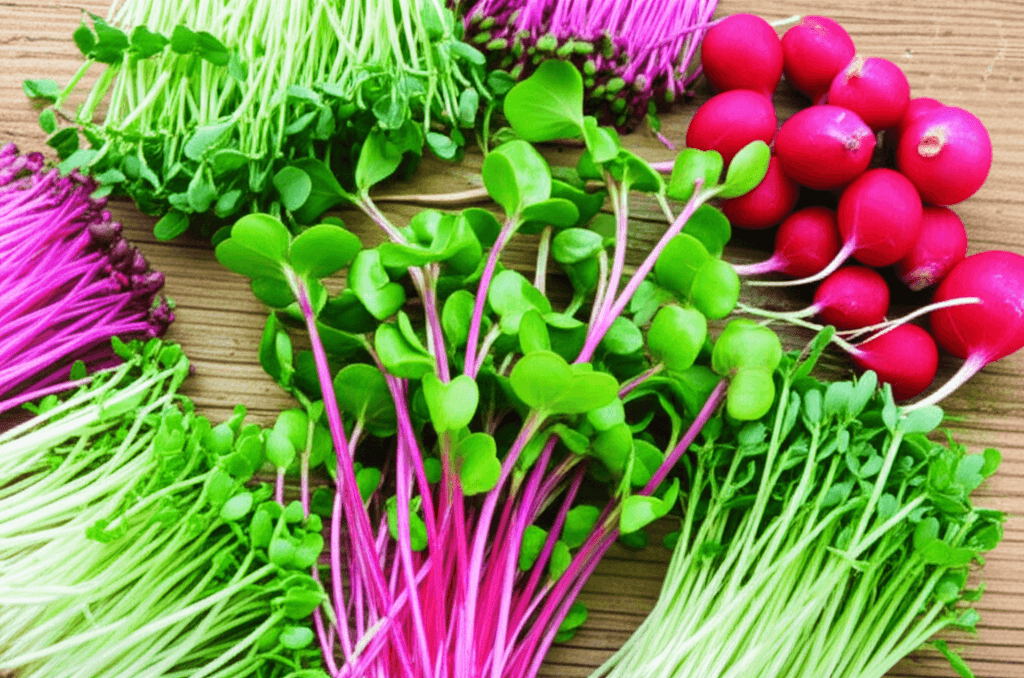In a world increasingly focused on nutrient-dense foods, a miniature marvel has emerged from the soil to capture the attention of health enthusiasts and culinary experts alike: microgreens. These tender, young vegetable greens, harvested just after their first true leaves appear, are not merely a garnish; they are concentrated bundles of flavor and nutrition, offering a powerful boost to your daily diet. Imagine unlocking a significantly higher nutritional punch from a fraction of the quantity compared to their mature counterparts – that’s the promise of microgreens.

What Exactly Are Microgreens?
Microgreens are essentially the seedlings of various vegetables and herbs, harvested at a very early stage of growth, typically when they are 1-3 inches tall. They represent a distinct growth stage, falling between a sprout and a baby green. They are cultivated from the seeds of a wide array of plants, including cruciferous vegetables (like broccoli, kale, and radish), herbs (such as basil and cilantro), leafy greens (like lettuce and chicory), and even cereals and legumes. Their taste varies greatly depending on the variety, ranging from neutral to spicy, slightly sour, or even bitter, generally offering a strong and concentrated flavor profile.
Not to Be Confused with Sprouts or Baby Greens
While often grouped with sprouts or baby greens, microgreens are distinctly different. Sprouts are germinated seeds, typically grown in water in dark, humid conditions, and consumed whole (seed, root, and shoot) after just 2-3 days. This warm, moist environment can sometimes be more conducive to bacterial growth. Microgreens, on the other hand, are grown in soil or another growing medium and require light, developing stems and cotyledon leaves (and sometimes their first true leaves) before being harvested. The roots and seed hulls are not consumed with microgreens, reducing the risk of seed-borne contamination often associated with sprouts. Baby greens are more mature than microgreens, harvested after 15-40 days, once they have developed their true leaves but before reaching full size.

Nutritional Powerhouses: A Concentrated Dose of Goodness
The appeal of microgreens lies in their impressive nutritional density. While the exact nutritional content varies by type, research suggests that microgreens often contain a higher concentration of many nutrients than their mature, fully grown counterparts. Some studies even indicate they can contain 4 to 40 times more nutrients.
Vitamins, Minerals, and Antioxidants Galore
Microgreens are rich in a diverse array of essential vitamins, minerals, antioxidants, phytonutrients, and phytosterols. For instance, a 100g serving of kale microgreens provides only 29 calories but is an excellent source of antioxidant vitamins, potassium, and calcium. A sunflower and basil microgreen mix of the same weight offers 28 calories and a good amount of protein, carbohydrates, fiber, calcium, iron, magnesium, phosphorus, potassium, sodium, zinc, vitamin C, vitamin A, and folate.
Specific examples of nutrient powerhouses include:
- Red cabbage microgreens: High in vitamin C, vitamin K, and powerful anthocyanin antioxidants.
- Broccoli microgreens: Loaded with sulforaphane, a compound with anti-cancer properties, and up to 2.32 times more minerals like phosphorus, potassium, magnesium, manganese, zinc, iron, calcium, and copper than mature broccoli. They are also rich in vitamins C, E, and K.
- Pea shoots: Provide seven times the vitamin C of blueberries and eight times the folic acid of bean sprouts, along with beta carotene, chlorophyll, flavonoids, and polyphenols. They are also a good source of plant-based protein, dietary fiber, folate, and manganese.
- Arugula microgreens: Packed with vitamins A, C, and K, antioxidants, and dietary fiber, and are a source of glucosinates which convert to sulforaphane.
- Sunflower microgreens: Rich in vitamin E, magnesium, and healthy fats, supporting skin health and strengthening bones.
Higher Nutrient Density Than Mature Counterparts
One of the most compelling reasons to include microgreens in your diet is their enhanced nutrient profile. For example, red cabbage, cilantro, garnet amaranth, and green daikon radish microgreens have shown high concentrations of Vitamins C, A, K, and E, respectively. Broccoli microgreens specifically contain more sulforaphane than their mature counterparts. This concentrated nutrient content means that even small amounts of microgreens can contribute significantly to your daily micronutrient intake, providing similar nutritional effects to larger quantities of mature vegetables.

The Myriad Health Benefits of Microgreens
The rich blend of vitamins, minerals, and bioactive compounds in microgreens translates into a wide array of potential health benefits, earning them the label of a “functional food” or even a “superfood”.
Supporting Heart Health
Microgreens can contribute to a healthier cardiovascular system. Their high polyphenol content is linked to a lower risk of heart disease. Studies have shown that adding red cabbage microgreens to a high-fat diet can help reduce body weight and risk factors for heart disease by lowering “bad” LDL cholesterol and triglyceride levels and fighting inflammation.
Potent Antioxidant and Anti-Inflammatory Properties
One of the most significant benefits of microgreens is their high antioxidant content. Antioxidants help combat free radicals in the body, which can cause cell damage and contribute to the development of chronic diseases like cancer. Different types of microgreens offer various antioxidants; for instance, Brassica microgreens (like broccoli) are high in vitamin E, a phenolic antioxidant, while Asteraceae microgreens (like chicory and lettuce) appear to be high in vitamin A or carotenoid antioxidants. These compounds also possess anti-inflammatory properties, which are crucial for overall health and disease prevention.
Aiding in Diabetes Management
Emerging research suggests that microgreens may play a role in managing Type 2 diabetes. Certain varieties have been found to regulate blood sugar levels by enhancing glucose uptake and reducing insulin resistance. Fenugreek microgreens, for example, have been observed to improve cellular sugar uptake by as much as 25% to 44%.
Boosting Brain Health and Vision
The polyphenols abundant in microgreens may also support cognitive function, improving thinking and reasoning, and potentially delaying the onset of neurodegenerative diseases like Alzheimer’s. Additionally, the high levels of vitamin A and other carotenoids in some microgreens, such as those from the Asteraceae family, are beneficial for protecting vision.
Promoting Gut Health and Digestion
Microgreens are a good source of fiber, which is essential for healthy digestion and gut health. Incorporating them into your diet can aid in maintaining a healthy digestive system and contribute to overall well-being.

Incorporating Microgreens into Your Daily Diet
Adding microgreens to your daily meals is surprisingly easy and can elevate both the nutritional content and the sensory experience of your food. They offer a burst of fresh flavor, vibrant color, and appealing texture.
Easy Ways to Enjoy Their Flavor and Crunch
- Salads and Sandwiches: Use microgreens as a primary ingredient in salads or as an alternative to lettuce in sandwiches, wraps, burgers, or tacos.
- Smoothies and Juices: Blend them into smoothies or juice them for a nutritional boost. Wheatgrass juice is a popular example. Pea shoot microgreens are also a good addition to smoothies.
- Garnish: Sprinkle them generously over soups, omelets, frittatas, pizzas, curries, flatbreads, or any main dish. Their intense flavors mean a little goes a long way.
- Sides: Serve them as a fresh side dish alongside your main course.
Creative Culinary Uses
Beyond the basics, microgreens can be creatively integrated into various dishes:
- Chop them and add them to ground meats, plant-based burger substitutes, meatballs, or meatloaf for added moisture and nutrients.
- Incorporate them into salsas or guacamole to enhance flavor profiles.
- Certain microgreens like borage, mint, or lemon basil can even be used in drinks, muddled into cocktails or iced teas.
- Add them to fish when cooking in foil or parchment paper.

Growing Your Own or Smart Shopping
Microgreens are relatively accessible, whether you choose to grow them yourself or purchase them from a market.
Simple Steps for Home Cultivation
Growing microgreens at home is a rewarding, cost-effective, and practical way to ensure a fresh supply of nutrient-dense greens year-round. They require minimal equipment and can be grown indoors or outdoors.
Here’s what you’ll typically need:
- Good-quality seeds: Choose your desired microgreen varieties.
- Growing medium: A container filled with potting soil or homemade compost, or a single-use growing mat.
- Light: Proper lighting, either sunlight or ultraviolet light, ideally for 12-16 hours per day.
Basic Growing Instructions:
- Fill your container with soil, gently, without over-compressing it, and water lightly.
- Sprinkle seeds evenly on top of the soil.
- Lightly mist with water and cover the container with a plastic lid.
- Check daily and mist as needed to keep seeds moist.
- Once seeds germinate (a couple of days), remove the lid and expose them to light.
- Water once a day until microgreens gain color and grow.
- Harvest after 7-10 days by cutting stems just above the soil line.
What to Look for When Buying
If purchasing microgreens, ensure they are fresh, vibrant, and free from wilting or discoloration. Many upscale restaurants feature them, and they are increasingly available in grocery stores or farmers’ markets. Some suppliers offer them still rooted in their growing medium, allowing you to cut them as needed and keep them fresh longer in the fridge. When buying seeds for home growing, look for non-GMO options.
Conclusion: Small Leaves, Big Impact
Microgreens offer a convenient and flavorful way to enhance your diet with a concentrated dose of essential vitamins, minerals, and health-promoting antioxidants. Their versatility in the kitchen, coupled with their ease of cultivation, makes them an accessible superfood for everyone. By making these tiny powerhouses a regular part of your daily meals, you can take a significant step towards improved heart health, enhanced cognitive function, better digestion, and overall well-being. A small addition of these healthy leaves and stems can indeed make a big impact on your nutritional intake.






